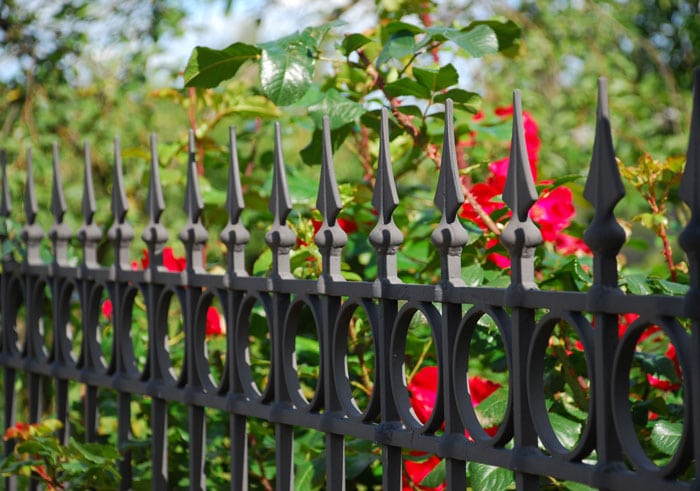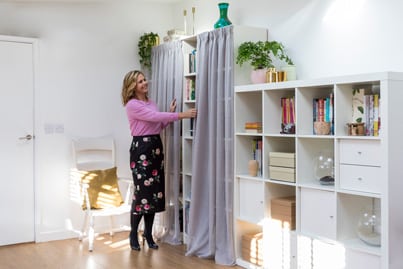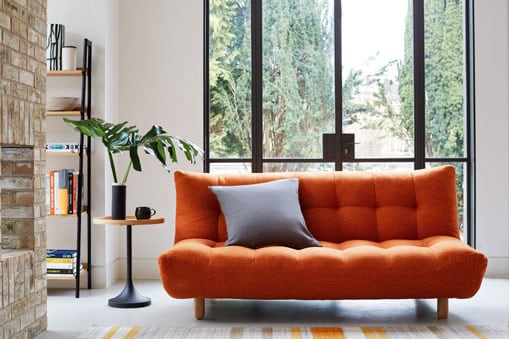Fewer Pests, Earlier Crops And Tastier Pickings! As allotment holders struggle to keep their crops watered, expert Mike Thurlow offers 7 plus points about home-growing in a heatwave.

The long, dry summer may have been a struggle for allotment holders battling to keep up with watering – but hot weather is also keeping some garden nuisances at bay.
As National Allotments Week beckons, horticultural expert and allotment holder Mike Thurlow, of the National Allotment Society, says there are some advantages of a hot, sunny summer to ‘grow your own’ gangs nationwide, provided you keep your crops well watered.
1. Fewer aphids
“The heatwave seems to have slowed the insect population down. On the open ground, there haven’t been as many aphids. We had a short burst of greenfly earlier on in the year, which came to nothing, and not much since then,” he observes. “Just be aware that aphids have a second burst of activity towards the end of summer, so be prepared.”
2.Slugs have gone underground
“We haven’t had as many slug and snail problems this year, as they’re likely to have gone underground, but once it cools, there will be more, so you need to be vigilant when the rain arrives.”

3. Less blight
If you water erratically, your tomatoes may still succumb to blossom end rot (where they turn brown at the base and split). But the dryness of the weather will prevent blight, says Thurlow, because blight thrives in humid, damp weather, when the spores become mobile.
Water your crops directly at soil level, taking the rose off the watering can if necessary, and give tomatoes and other plants one good soaking that you know will last a couple of days. When watering potatoes and tomatoes, try to keep the foliage as dry as you can.
4. Earlier crops
Gardeners should be enjoying the fruits of their labour earlier than usual because of the heatwave, he says. Harvest your crops young before they bolt (set seed) and produce flowers, which many of them will be doing early because of the hot weather.
“If it looks good enough to eat, then cut it, because the next day it might run to seed,” Thurlow advises.
5. Cut and come again
If you cut crops early, some may return for a second harvest, he predicts.
“Peas may have gone to seed prematurely, but if you cut them down they will regrow, so it may be worth considering leaving them in the ground – which you should do anyway, as they are a nitrogen source – but once the cooler weather kicks in and you keep the watering going, you may well catch a late crop.

“With brassicas – such as broccoli and winter cabbage – if you cut them and leave the stump in the ground, you get little florets coming off those. Then come October, you might have four little cabbages coming off that stump.”
6. Tastier crops
Provided watering is kept up, sun lovers (such as peppers) may have a more intense flavour, says Thurlow.
“We may notice that we have more intense flavour in some produce, because they’ll ripen in the heatwave.”
7. Early sowing opportunities
“Start sowing early varieties of carrot, beetroot and lettuce. Water along a drill incorporating seaweed in the water. You never know how long it will be until the autumn weather.
Plants which you sow now – brassicas such as spring cabbage and some kale – may have enough time to become established if the warm weather continues, to see them through winter.
Other plants such as Florence fennel, which would normally be sown later in the season, could be sown now and, although smaller, the bulbs may be ready by late October or November.

Prioritise crops which will take you through the winter. Brassicas will have been stressed with this weather – Brussels sprouts, broccoli, kale and winter cabbage. If you have crops which normally take longer to mature, harvest them while they are young.
“One of the major difficulties now is going to be your overwintering crops,” says Thurlow. “You need to get them into a position where they will survive the winter without running to seed.
“It’s not too late to sow spring cabbage. Just have a go. If the heat continues, we may have enough growing time left into the autumn where we can get plants into a condition where they will survive the winter.”
National Allotments Week runs from August 13-19. For details visit nsalg.org.uk.
Find out if your garden is adding value to your home, with a free no obligation valuation and market insight this summer.





 A calm and stylish space can boost productivity and look good, as entrepreneur Liz Earle tells Gabrielle Fagan.
Millions of us now spending some, if not all, of our time working from home. And one of the joys of working in your own space is that you’re the boss when it comes to design and ambience – so you can escape dull desks and bland decor and kit out your own personalised sanctuary to suit your taste.
Entrepreneur and beauty and wellbeing expert, Liz Earle, has teamed up with blinds and curtain specialist Hillarys (hillarys.co.uk), to reveal her own home office and simple but effective tips to help you conjure a stylish work area of your own, where you can be happy as well as productive.
“It’s a quick and easy strategy for creating the perfect space, or could be used for an existing office makeover, which could be just what you need to reinvigorate your home-working life,” enthuses mother-of-five Earle, 54, who lives on a farm in the West Country. “There’s undoubtedly a whole host of benefits to home-working, particularly from a health and wellbeing perspective, whether that’s because you’re escaping the daily commute or because you’re able to spend more time with the family.”
Read on to discover Earle’s approach for creating a calm and stylish home office…
1. Work with the light
“Put your desk in front of a window; plenty of natural light is the holy grail, as it’s known to significantly help increase energy, creativity and productivity,” advises Earle. “Wood or faux wood Venetian blinds are perfect for home office windows as they filter light, which will minimise glare on a computer screen and the slats can be adjusted to control light levels when the sun moves round during the day. Go for function but don’t forget about style. Roman blinds soften the look, and a pretty botanical fabric brings a lovely feel of nature into the room.”
A calm and stylish space can boost productivity and look good, as entrepreneur Liz Earle tells Gabrielle Fagan.
Millions of us now spending some, if not all, of our time working from home. And one of the joys of working in your own space is that you’re the boss when it comes to design and ambience – so you can escape dull desks and bland decor and kit out your own personalised sanctuary to suit your taste.
Entrepreneur and beauty and wellbeing expert, Liz Earle, has teamed up with blinds and curtain specialist Hillarys (hillarys.co.uk), to reveal her own home office and simple but effective tips to help you conjure a stylish work area of your own, where you can be happy as well as productive.
“It’s a quick and easy strategy for creating the perfect space, or could be used for an existing office makeover, which could be just what you need to reinvigorate your home-working life,” enthuses mother-of-five Earle, 54, who lives on a farm in the West Country. “There’s undoubtedly a whole host of benefits to home-working, particularly from a health and wellbeing perspective, whether that’s because you’re escaping the daily commute or because you’re able to spend more time with the family.”
Read on to discover Earle’s approach for creating a calm and stylish home office…
1. Work with the light
“Put your desk in front of a window; plenty of natural light is the holy grail, as it’s known to significantly help increase energy, creativity and productivity,” advises Earle. “Wood or faux wood Venetian blinds are perfect for home office windows as they filter light, which will minimise glare on a computer screen and the slats can be adjusted to control light levels when the sun moves round during the day. Go for function but don’t forget about style. Roman blinds soften the look, and a pretty botanical fabric brings a lovely feel of nature into the room.”
 2. Make an eco desk choice
“Make your office more eco-friendly with a desk made from reclaimed scaffolding boards and simple trestle legs,” Earle suggests. “Scaffolding boards can be picked up cheaply from a salvage yard, and the beauty of doing this is that you can design your desk according to your space and needs. Make sure there’s room for a task light and desk accessories.”
3. Invest in a great chair
“As tempting as it sounds, dragging a chair from the dining room or a stool from the kitchen is a false economy,” Earle warns. “An ergonomically designed chair may not give you the designer feel you had in mind – but your back will thank you for it! You can always pretty it up with a cosy sheepskin or throw.
“Don’t hunch over a laptop – set up a computer monitor at eye level and use a separate keyboard, ergonomic mouse or track pad. Rest forearms on the desk while typing and invest in a simple foot rest to ensure you sit with legs at a comfortable 90-degree angle to the floor.”
TIP: Try to do simple stretches and strength moves regularly throughout the day. You don’t necessarily need equipment – try out chair yoga which can be done while seated.
4. Get crafty with accessories
“It needn’t cost the earth to decorate your office. Charity shops and car-boot sales are perfect hunting grounds for quirky, vintage pieces, or you could indulge in some DIY creativity,” says Earle. “Cover plain cardboard box files with wallpaper or fabric for a fabulous bespoke look. A pin-board, made from a wooden picture frame, foam and fabric, is a great way to display photos, to-do lists or other information you want to see at a glance.”
TIP: Schedule things in your diary that make you happy, not just work tasks.
5. Bring nature into your space
“It’s been proven that plants in the workplace can reduce stress levels and increase productivity,” Earle points out. “Aside from these health benefits, plants are a cheap and cheerful way to add decoration and bring the outdoors in. I opt for green, leafy plants like ferns or ivy, avoiding cacti whose spikes can create the opposite of a relaxed feeling, or flowers with a strong scent, which can be distracting or irritating.” And if caring for real plants doesn’t quite work out for you, there are great faux options available these days, so you can still get that calming, leafy look.
2. Make an eco desk choice
“Make your office more eco-friendly with a desk made from reclaimed scaffolding boards and simple trestle legs,” Earle suggests. “Scaffolding boards can be picked up cheaply from a salvage yard, and the beauty of doing this is that you can design your desk according to your space and needs. Make sure there’s room for a task light and desk accessories.”
3. Invest in a great chair
“As tempting as it sounds, dragging a chair from the dining room or a stool from the kitchen is a false economy,” Earle warns. “An ergonomically designed chair may not give you the designer feel you had in mind – but your back will thank you for it! You can always pretty it up with a cosy sheepskin or throw.
“Don’t hunch over a laptop – set up a computer monitor at eye level and use a separate keyboard, ergonomic mouse or track pad. Rest forearms on the desk while typing and invest in a simple foot rest to ensure you sit with legs at a comfortable 90-degree angle to the floor.”
TIP: Try to do simple stretches and strength moves regularly throughout the day. You don’t necessarily need equipment – try out chair yoga which can be done while seated.
4. Get crafty with accessories
“It needn’t cost the earth to decorate your office. Charity shops and car-boot sales are perfect hunting grounds for quirky, vintage pieces, or you could indulge in some DIY creativity,” says Earle. “Cover plain cardboard box files with wallpaper or fabric for a fabulous bespoke look. A pin-board, made from a wooden picture frame, foam and fabric, is a great way to display photos, to-do lists or other information you want to see at a glance.”
TIP: Schedule things in your diary that make you happy, not just work tasks.
5. Bring nature into your space
“It’s been proven that plants in the workplace can reduce stress levels and increase productivity,” Earle points out. “Aside from these health benefits, plants are a cheap and cheerful way to add decoration and bring the outdoors in. I opt for green, leafy plants like ferns or ivy, avoiding cacti whose spikes can create the opposite of a relaxed feeling, or flowers with a strong scent, which can be distracting or irritating.” And if caring for real plants doesn’t quite work out for you, there are great faux options available these days, so you can still get that calming, leafy look.
 6. Conceal the clutter
“But remember, the more stuff you add to your desk, the more your brain has to keep track of,” adds Earle. “Working in a crowded space can be mentally exhausting and distracting, even if you don’t realise it. Get creative with storage. I’ve used soft, floaty voile curtains to disguise a shelving unit.”
7. Create an uplifting display
Finally, treasured photos that spark joy, and meaningful sayings to keep motivation levels up, make an ideal finishing touch. “Pictures and photographs can be a great way to inspire creativity and a feeling of wellness,” says Earle. “Pick out three or four that are significant to you and make sure those are in your view.”
Conclusion
Whether
6. Conceal the clutter
“But remember, the more stuff you add to your desk, the more your brain has to keep track of,” adds Earle. “Working in a crowded space can be mentally exhausting and distracting, even if you don’t realise it. Get creative with storage. I’ve used soft, floaty voile curtains to disguise a shelving unit.”
7. Create an uplifting display
Finally, treasured photos that spark joy, and meaningful sayings to keep motivation levels up, make an ideal finishing touch. “Pictures and photographs can be a great way to inspire creativity and a feeling of wellness,” says Earle. “Pick out three or four that are significant to you and make sure those are in your view.”
Conclusion
Whether 


 “The missed opportunity on the stamp duty front is directly linked to the weakness of this Government,” according to John Holden Chairman of McCarthy Holden, “and the mid to top end property sectors are long overdue a stamp duty reduction since the disastrous hike in the stamp levy on larger properties by George Osborne”
“The missed opportunity on the stamp duty front is directly linked to the weakness of this Government,” according to John Holden Chairman of McCarthy Holden, “and the mid to top end property sectors are long overdue a stamp duty reduction since the disastrous hike in the stamp levy on larger properties by George Osborne”

 “My focus may have been on cooking, but it’s always centred on the home. In my books and TV programmes, I’m always keen on sharing tips to help people,” says the cook.
“My focus may have been on cooking, but it’s always centred on the home. In my books and TV programmes, I’m always keen on sharing tips to help people,” says the cook. Here are Mary’s top tips:
Here are Mary’s top tips:




